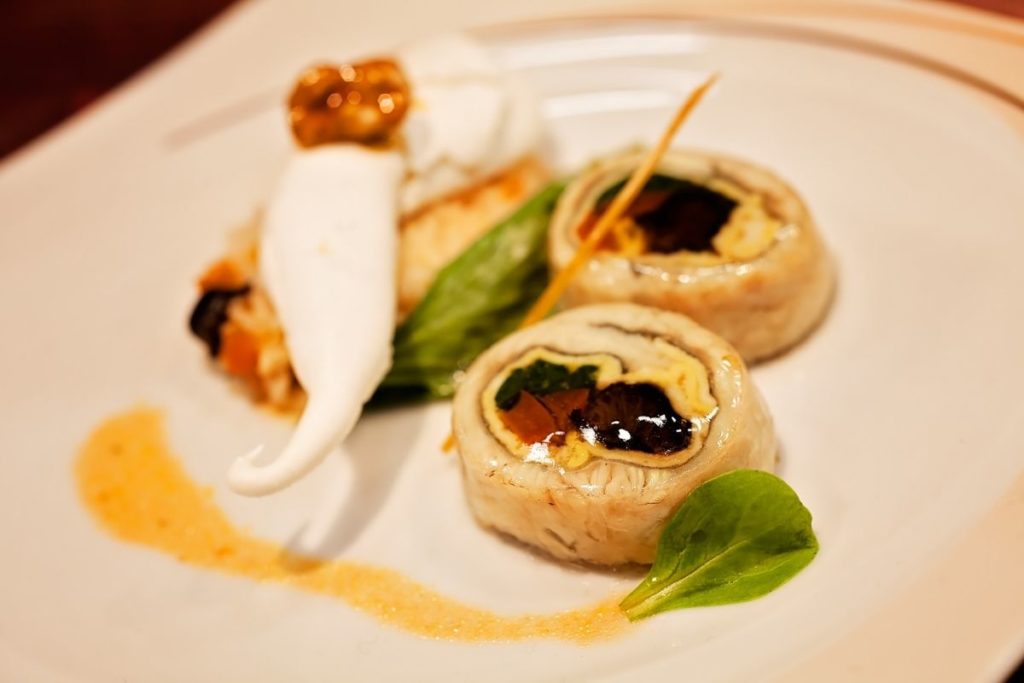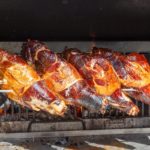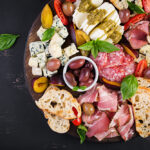So, you’re catering for an event. Whether it’s a big or small occasion, you will need to calculate the right food portions for the day. That may seem like quite a big ask but, thankfully, there are some simple methods of getting a pretty accurate estimate.
As you know, everyone eats different amounts. Some people eat small portions of food, while others eat large portions – and then some more. That is why it can seem daunting to calculate food portions for catering.

But, we are here to help. In today’s blog, we will be guiding you through some ways of calculating food portions for catering, so guests do not go without food, and you don’t end up with mounds of leftovers.
By the end of this article, you will hopefully have a better understanding, so your catering goes off without a hitch.
Read our Finger Food Catering Ideas for some menu inspiration
Calculate The Number Of Guests
It may seem obvious, but before you order in food, you need to get a headcount of the number of people attending your event. Knowing how many attendees there will be is arguably the most important step.
If nothing else, knowing the number of guests means you can estimate the portions needed in bulk. Ultimately, you can then prevent food wastage after the event. After all, you really don’t want to pay for and provide food that is never going to be eaten due to fewer than expected guests. We recommend gathering this data around two or three days before an event, so you have sufficient time to plan properly.
Planning a party can be so stressful. Well, don’t worry. We’ve got the Party Decorations sorted for you. Click here for lot of ideas.
Generally speaking, if you’re catering for a sit down meal, each guest will eat a single portion of food. But, for a buffet, things are slightly different. You will require a lot more food as people will serve themselves. And, let’s face it, most of us go overboard at buffets!
If you choose appetisers, main dishes, desserts, and drinks, you can then calculate the amount of each food needed to ensure you don’t run out.
While the amount of people going may alter, regardless of whether they RSVP or not, this remains a great approach when estimating how much food to buy.
Top Tip: Of course, you are maybe catering for someone else’s event. If so, request that they establish an RSVP deadline, so you can gather a more accurate head count.
Is A Catering Business A Good Idea? See our post if you are thinking of starting one
Menu
The type of event you’re arranging determines the catering menus and serving amounts. When arranging a corporate event, for example, you are more likely to consider dietary requirements than when organising a get-together party with friends and family.
Of course, you should still be vigilant of people’s dietary needs, but for corporate events, you will probably be dealing with a lot more people.
Is someone you know about to finished Uni? See our Catering Food Ideas For Graduation Parties
The Event’s Time
Discuss the date and time of the function with the host, as this may affect the amount of food you need to prepare. For example, an after-dinner event is unlikely to require as much food as an all-afternoon affair.
Always anticipate serving more food for mealtime events. For these events, such as breakfast, lunch, and dinner, guests will always be expecting a full meal.
However, if your meal is not in peak-time, like mid-afternoon or in the evening, smaller, snack-sized portions should suffice.
Have you thought of hiring a professional catering company? Check our article on Jeeta Catering for some info
Portions Per Person
You should calculate the exact portions of food for each person. A decent estimate for the amount of food to serve to one guest is approximately 1.5 pounds (600g). Divide this by the number of servings, taking into account the main course, as well as the smaller side dishes.
A Food Truck can be a fun way to cater an event. See more here
Order Additional Cheaper Foods
If you’re worried that the main food for the event will run low or even run out, we suggest ordering cheaper foods such as salad, potatoes, pasta, rice and bread. These are excellent for filling people up and are inexpensive, making them terrific choices for back-up servings.
Do you have a friend that is a nightmare to buy gifts for? Or maybe it’s a family member. Take a look at our handy Gift Suggestions for some inspiration.
Remember, you shouldn’t have to stress about running out of food. Simply stock up on a handful of your inexpensive side dishes or snacks, and you should be covered.
For more tips, take a look at our piece on Catering For 100 Guests On A Budget
Follow Your Budget
You do not want to end up delivering less food than required or serving too much food. This is why you need to make sure you communicate financial details throughout the planning process.
Some hosts will wish to keep costs low, while others may have no such concerns. Discuss the projected menu and flag any potentially expensive items. This way, you should be able to stick to your budget more easily.
Are you worried about ensuring food is chilled? See our post on Keeping Deli Meats & Fruit Cold At A Party
Appetisers During Meal Time
Knowing how many appetisers to serve is important when it comes to calculating food portions for catering.
For the main meal, you should plan for each guest to eat around 8 to 10 appetisers. For non-sit-down dinners, you should have enough d’oeuvres for each guest to enjoy for at least 8 hours. Then, simply multiply this by the number of guests attending and the hours the vent will last for.
This should give you a pretty accurate estimate for appetisers. If the sit down meal is later, you should prepare 3 or 4 appetisers. Each one will count as 1 bite per serving. For appetisers before a meal, each guest will typically eat 3 to 4 per hour.
Multiply this by how many guests there are and the hours the event will last and this will, again, give you the quantity of appetisers required.
We have some great Finger Food Platter Ideas for you to make
Guidelines
While there is no definite method to calculate food portions perfectly for catering, you can follow some general guidelines. These are set out below:
- Make sure you have more main dishes than appetisers/side dishes.
- Always pay close attention to dietary requirements and requests.
- Round up your estimates rather than down.
- Multiply the number of people attending the event by three to calculate the appetisers needed.
- Remember, people typically eat more at buffets, so order more in for these events.
- Keep an allowance to cater for more guests than you anticipated.
Not sure on how many trays of food this will add up to? See on article How Much Food Does A Full Tray Feed?
In Summary
Calculating food portions for catering can be a little tricky. But, if you follow certain formulas set out above, you can usually get a pretty accurate estimate of what is required.
We hope this has helped you prepare for your next big catering event!
- The 15 Best Sandwiches In Melbourne - April 18, 2024
- The 9 Best Vietnamese Restaurants In Melbourne - April 17, 2024
- Sydney’s Best Chocolate Shops - April 4, 2024








